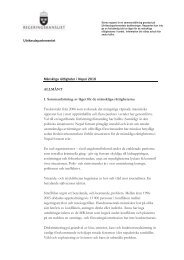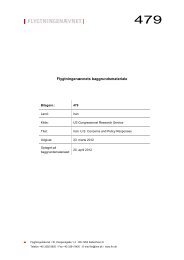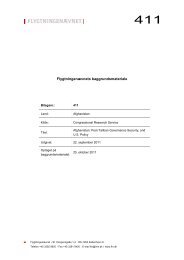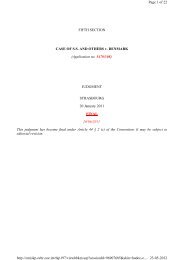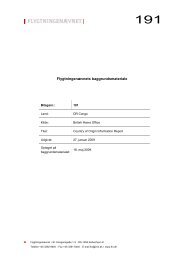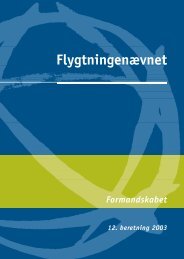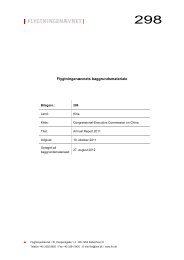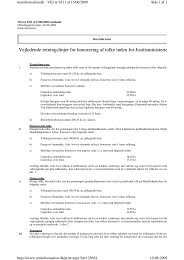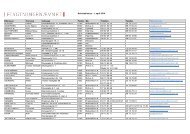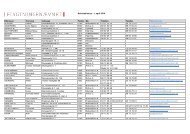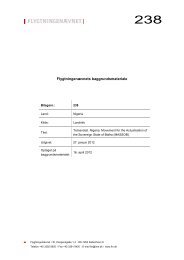Annual Report - National Human Rights Commission
Annual Report - National Human Rights Commission
Annual Report - National Human Rights Commission
You also want an ePaper? Increase the reach of your titles
YUMPU automatically turns print PDFs into web optimized ePapers that Google loves.
Annexure 8<br />
○ ○ ○ ○ ○ ○ ○ ○ ○ ○ ○ ○ ○ ○ ○ ○ ○ ○ ○ ○ ○ ○ ○ ○ ○ ○ ○ ○ ○ ○ ○ ○ ○ ○ ○ ○ ○ ○ ○ ○ ○ ○ ○ ○ ○ ○ ○ ○ ○ ○ ○ ○ ○ ○ ○ ○ ○ ○ ○ ○ ○<br />
○<br />
responsibility to formulate and implement health projects as per the local requirements<br />
within the local overall framework of the health policy of the state. The elected<br />
representatives of the PRIs and the officers should be given adequate<br />
training in local level health planning. Integration between the health department and<br />
local bodies should be ensured in formulating and implementing the health projects at<br />
local levels.<br />
2. The adoption of a State essential drug policy that ensures full availability of essential<br />
drugs in the public health system. This would be through adoption of a graded essential<br />
drug list, transparent drug procurement and efficient drug distribution mechanisms and<br />
adequate budgetary outlay. The drug policy should also promote rational drug use in the<br />
private sector.<br />
3. The health department should prepare a State Drug Formulary based on the health status<br />
of the people of the state. The drug formulary should be supplied at free of cost to all<br />
government hospitals and at subsidized rate to the private hospitals. Regular updating of<br />
the formulary should be ensured. Treatment protocols for common disease states should<br />
be prepared and made available to the members of the medical profession.<br />
4. The adoption of an integrated community health worker programme with adequate<br />
provisioning and support, so as to reach out to the weakest rural and urban sections,<br />
providing basic primary care and strengthening community level mechanisms for<br />
preventive, promotive and curative care.<br />
5. The adoption of a detailed plan with milestones, demonstrating how essential secondary<br />
care services, including emergency care services, which constitute a basic right but are<br />
not available today, would be made universally available.<br />
6. The public notification of medically underserved areas combined with special packages<br />
administered by the local elected bodies of PRI to close these gaps in a time bound<br />
manner.<br />
7. The adoption of an integrated human resource development plan to ensure adequate<br />
availability of appropriate health human power at all levels.<br />
8. The adoption of transparent non-discriminatory workforce management policies,<br />
especially on transfers and postings, so that medical personnel are available for working<br />
in rural areas and so that specialists are prioritised for serving in secondary care facilities<br />
according to public interest.<br />
9. The adoption of improved vigilance mechanisms to respond to and limit corruption,<br />
<strong>National</strong> <strong>Human</strong> <strong>Rights</strong> <strong>Commission</strong> <strong>Annual</strong> <strong>Report</strong> - 2004-2005<br />
231<br />
AR-Chapter-1-19-10-6-06.p65<br />
251<br />
7/17/06, 6:31 PM



